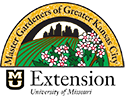Hotline: 816.833.TREE (8733)

-
Jan
23
Start Trees Off Right
Research from K-State’s John C. Pair Horticultural Center has quantified the effect of controlling grasses around newly planted trees. Jason Griffin, William Reid, and Dale Bremer conducted a study to investigate the inhibition of growth of transplanted, seedling trees when lawn...
Continue Reading → -
Jan
20
Caddo Sugar Maples
Sugar maples often have significant problems with our Kansas weather. Our hot, often dry summers and windy conditions can shorten the life of these trees. However, some sugar maples are better adapted to Kansas conditions than others. Our...
Continue Reading → -
Jan
23
Pawpaw Trees: A Native Fruit
Even though pawpaw is native to eastern Kansas, many people in the state have never eaten one. Fruits resemble fat bananas and are generally up to 6 inches long and as much as 3 inches wide. The taste is...
Continue Reading → -
Oct
10
Pruning Trees and Shrubs in the Fall
Pruning in August can stimulate new growth that is less hardy during the winter. But what about pruning at this time of year? Woody plants move sugars and other materials from the leaves to storage places in the woody...
Continue Reading → -
Oct
24
Fall Colors of Trees
Part of the allure of fall foliage is color variation. There are trees that turn red, purple, yellow, orange and brown. Specific plant pigments determine individual colors. Foliage derives its normal green color from chlorophyll, the substance that captures...
Continue Reading → -
Aug
14
Pear Harvest
Most pear cultivars should not be allowed to ripen on the tree. They should be picked while still firm and ripened after harvest. Tree-ripened fruits are often of poor quality because of the development of grit cells and the browning...
Continue Reading → -
May
12
Fruit: Thinning Excess Fruit
Fruit: Thinning Excess Fruit A few areas of Kansas have avoided late freezes resulting in a heavy fruit crop this year. At first glance, this might seem to be a good thing. But too many fruit can cause problems...
Continue Reading → -
Apr
5
Fruit: Fertilizing the Home Orchard
Fruit trees benefit from fertilization around the bloom period, but the amount needed varies with the age of the tree. Normally, trees primarily need nitrogen, so the recommendations are for a high nitrogen fertilizer such as a 27-3-3,...
Continue Reading → -
Oct
26
Fall Colors of Trees
Part of the allure of fall foliage is color variation. There are trees that turn red, purple, yellow, orange and brown. Specific plant pigments determine individual colors. Foliage derives its normal green color from chlorophyll, the substance that captures the energy...
Continue Reading → -
Apr
4
Dogwood: Nature’s Little Show-off
Few spring scenes are as spectacular as the annual display provided by dogwood trees in the Ozark woodlands. Inconspicuous for most of the year, these diminutive denizens of our forests outdo their towering neighbors by providing a spectacular exhibition of...
Continue Reading →









